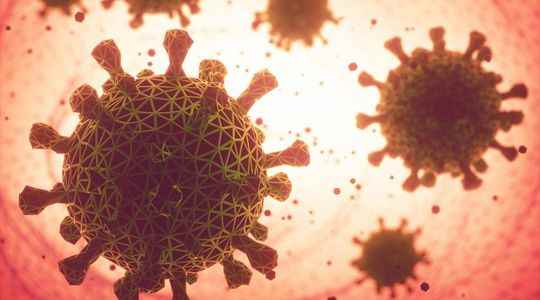A few positive signals, falling incidence rates in Ile-de-France, have given the illusion of an imminent decline. But the fifth Covid-19 wave is still far from over. Some 436,167 new contaminations identified in 24 hours on the territory, Wednesday, after a record at more than 460,000 cases the day before. A question arises: Omicron, very largely in the majority (more than 95%), is it alone responsible for this (new) rebound in the fifth wave?
A strain, BA.2, very close to Omicron (BA.1), is spreading all over the world and primarily in Europe. It even dominates in Denmark, a country very active in sequencing, and subject to a very strong wave of contamination. The BA.2 strain has also been spotted in the UK, Sweden, as well as around 40 other countries according to the platform Outbreak, from the Gisaid reference database. Including France.
Not all are necessarily affected by an increase in contamination, like the United Kingdom, which is in sharp decline. Nevertheless, the suspicion weighs for others, such as France, given the current dynamics of the epidemic and the characteristics of the sub-variant.
No evidence of increased severity
“It reminds me of the situation in mid-December. Our models then predicted a possible peak of the Delta wave, but the Omicron variant came to connect and there was no descent in France”, observes cautiously the epidemiologist Antoine Flahault with LCI. According to the health expert, BA.2 would contain 28 mutations more than Omicron, and based on its rapid progression in Denmark, or even in India and Singapore, could be more contagious than its elder.
Nothing says, on the other hand, that it is more severe. “In the current state of the data, it is unlikely. The two viruses are sufficiently close at the level of the Spike protein to think that they behave approximately the same way”, underlines Etienne Simon-Lorière at Parisian.
Then, all the variants do not act the same way everywhere on the planet. The daily rightly cites the example of the AY.4.2 strain, close to Delta, which for a time represented 25% of contaminations in the United Kingdom, without France being worried.
“I wouldn’t be surprised if BA.2 slowly replaces BA.1 over the next few months with a slightly ‘optimized’ mutational profile,” British virologist Tom Peacock of Imperial College London tweeted. to do, however, with the transition from Delta to Omicron.The professional evokes a more “subtle” shift.The only certainty: during the health crisis, long-term forecasts have rarely proven to be correct.
